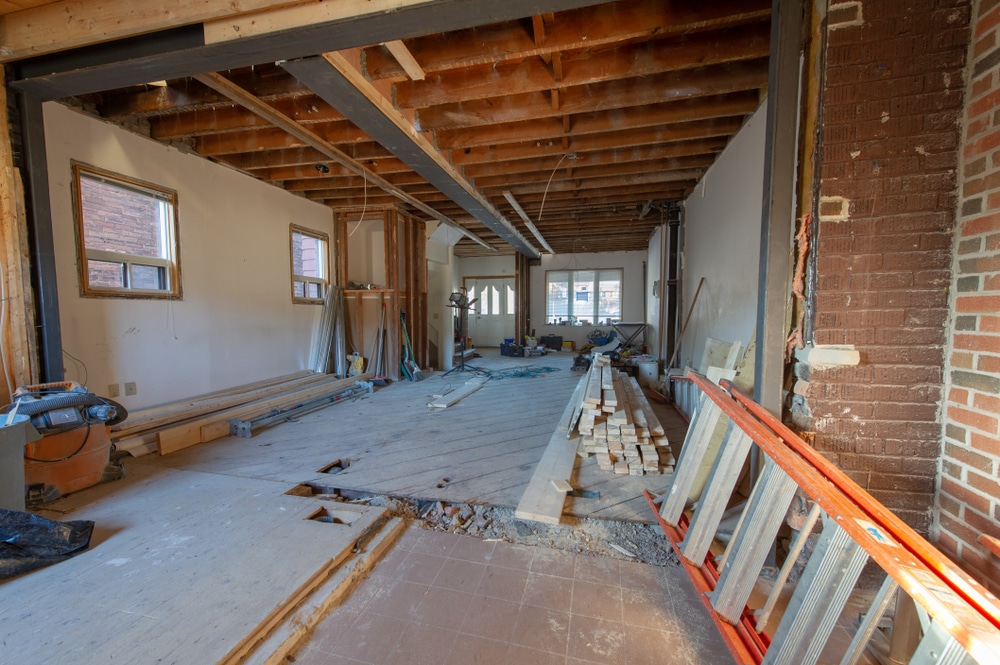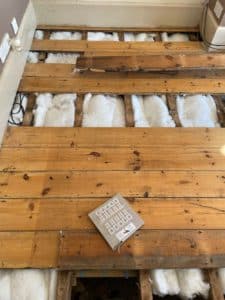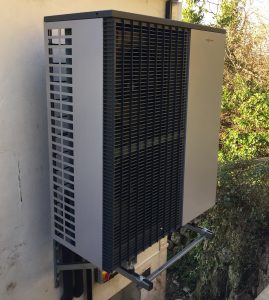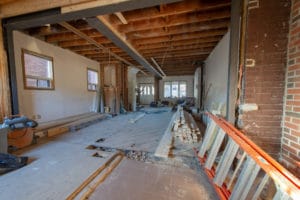Confused by PAS 2035 and how it impacts your 2030:2019 certification? Read our blog for the full lowdown.
Did you know, homes in the UK are among the least environmentally friendly in Europe? A lot of this comes down to the age of our buildings; most were built pre 90s when energy efficiency had no regulations whatsoever. As a result, ‘out of the existing 29 million homes in the UK, at the moment only eight million homes meet the highest energy standards.’
The government’s current goal is to make the UK net zero by 2050, and with 18% of our annual national CO2 emissions coming from existing homes, homes that will still be going strong in 2050. Retrofitting traditional buildings is a key strategy in the 2050 net zero roadmap, one that we’re more than happy to lend a hand with!
To encourage people to make their homes more energy efficient, the Government set aside funding to tackle the problem. And so the PAS 2030 certification was born, a way of making sure funding for retrofits was given to only the highest quality installations. The 2030:2019 iteration is simply the latest standard of certification, released in 2019.
PAS 2035 and PAS 2030:2019 are Publicly Available Specifications for the installation of energy efficiency measures in existing domestic buildings. They are inextricably linked to each other, combining to take a ‘whole house’ approach to the installation process.
This means looking at the retrofit project as a whole – including build, materials and customer – to ensure guidelines are met and energy efficiency optimised. While you can’t have one specification without the other, they are different entities. Plus, it’s useful to know more about PAS 2035 and PAS 2030: 2019 separately, as well as how they work together.
What is PAS 2035?
PAS 2035 is the new retrofit standard for energy efficient funding allocation. This new umbrella document was sponsored by the UK Government’s Department for Business, Energy and Industrial Strategy. It sets out clear and complete specifications for the energy retrofit of domestic buildings. This includes identifying improvement options, design and specify Energy Efficiency Measures (EEM), and the effective monitoring of retrofit projects. PAS 2035 also has a rigorous risk assessment process built in, guided by the requirements of the installation.
PAS 2035 adopts a ‘whole house’ approach; taking into account every aspect of the home’s energy efficiency, as well as the needs of the occupants. This ‘whole house’ and ‘fabric first’ approach is what sets PAS 2035 apart from 2030: 2019, by considering the knock on effect for each change, from an environmental point of view. This overarching process ensures measures aren’t taken that will end up being ineffective, because of failures elsewhere in the house; like bringing your insulation up to scratch, without draught proofing the windows. PAS 2035 makes sure the whole house is brought up to standard, which means cost-effective energy efficiency for years to come.
What is the difference between PAS 2035 and 2030?
When the government retrofit funding scheme started, PAS 2030 was created as a way for businesses to prove they have complied with the specified standards for their installations. In order to be awarded funding, PAS 2030 must be applied for and proven with supporting documentation. PAS 2035 on the other hand, is not a certification: it’s an industry standard that lays out the specifications retrofitting must meet to be compliant with funding regulations.
In a nutshell, PAS 2030 is the certification that confirms you can claim your funding, whereas PAS 2035 are the latest specifications to refer to as your retrofit guidelines.
How do I get PAS 2030: 2019 accreditation?
If you’re looking to install energy efficiency measures under any of the government supported initiatives, you must be certified to install the measures against the PAS 2030: 2019 standards.
PAS 2030 covers three main types of installations:
- Building Fabric Measures (BFM): including insulation, glazing, and doors
- Building Services Electrical (BSE): including lighting and lighting controls
- Building Services Mechanical (BSM): including boilers and heating systems
Only a certification body that has been accredited by UKAS can provide accreditation, this is where we come in! The path to obtaining your accreditation can be broken down into 6 simple steps:
- Complete application forms.
- Prepare supporting documentation.
- Submit QMS log in details.
- Initial assessment.
- Site inspections are carried out.
- Follow up assessment.
And we can help you with the whole process, whether that’s step by step, or with more general consultancy!
What is a PAS 2035 retrofit?
A PAS 2035 retrofit is an energy retrofit (on an existing domestic building) that complies with the new framework laid out by the government. The aim of these installations is to make the home low carbon, sustainable and low cost, for years to come. This, in turn, not only helps the government meet their 2050 net zero goal, but also helps the customer lower the cost of their fuel and energy bills.
PAS 2035 was created to raise standards through the introduction of the ‘whole house’ approach instead of a more modular, surface level method. This means any PAS 2035 retrofit should be adhering to the six core principles of PAS 2035.
What are the six principles of PAS 2035?
Six main principles form the foundation of PAS 2035: taking these into consideration and abiding by the guidelines they set out is vital. So, let’s cut through the jargon and break it down a little further:
Whole house retrofit
Looking at the way the house functions efficiently as a whole, not just the individual elements. This doesn’t just mean technical elements either, ‘whole house’ should take the occupants’ individual needs into consideration too.
Professional accountability
A certified professional should always take responsibility for the retrofit project. Whether it’s a success or a failure!
Bespoke projects
Every house is different, so every project’s approach should be tailored to fit. ‘Whole house’ means looking at the house as an individual building too. What works for one, won’t work for all.
Airtight, ventilate right
Ventilation is key, especially if you’re making the building as draught proof and insulated as possible. Without proper ventilation, an otherwise airtight house will seal in harmful pollutants, like carbon monoxide, as well as moisture that can damage a house and cause toxic mould.
Quality is everything
Buy best, buy once; quality products and tradesmen are vital to ensure minimal defects or disruptions and overall improved efficiency. Both during the installation process and in the years after.
Fabric first retrofit
A fabric first approach means prioritising the quality of the materials that go into the build. The main consideration for this is insulation, or minimising heat loss; one of the most effective ways to create a sustainable, low carbon house that’s low-cost to heat. With the ever-rising fuel costs, this one is paramount!
Can Buildpass help me with PAS 2035 retrofits?
Yes! We specialise in consultancy for PAS 2035 and all domestic property eco schemes! So whether you’re ready to take the next step, or need to find out more, schedule a call with our friendly team or drop us a message through our handy contact form!




















